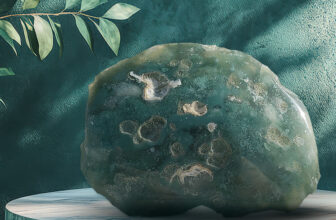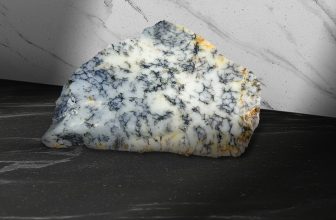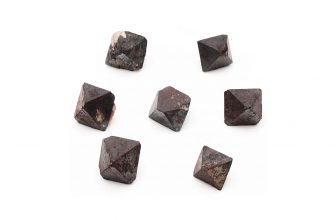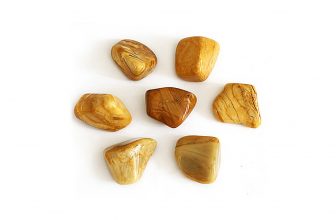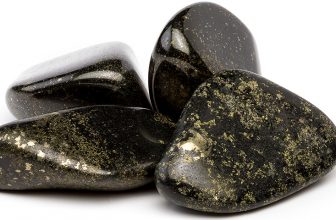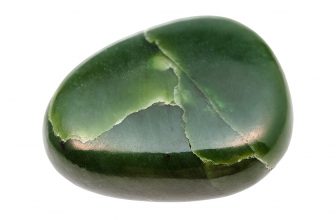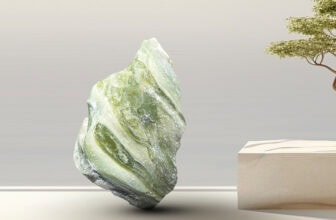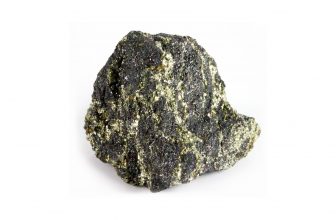Crystal Singing Bowls
 Can Sound Help You Find Peace?
Can Sound Help You Find Peace?
The world rarely pauses. Notifications buzz, thoughts race, and even moments of rest can feel restless. What if peace didn’t come from silence – but from sound?
Crystal singing bowls offer just that: a sound so pure it seems to still the noise of everyday life. These luminous vessels, made from quartz crystal, create tones that shimmer through the air like ripples across a still pond. When played, their resonance has a way of reaching something deeper – something quiet and steady beneath the surface of the mind.
Unlike traditional instruments, crystal singing bowls are often used not for performance, but for restoration. Their tones are said to calm the nervous system, steady the breath, and bring the listener into a meditative, almost dreamlike state. In wellness spaces, yoga studios, and homes across the world, they’ve become symbols of inner balance – an ancient idea, reimagined in glass-clear quartz.
But where did these bowls come from? Their origins trace back to something older and more mysterious: the standing bell.
From Bronze to Quartz: The Evolution of Resonance
Long before crystal bowls shimmered beneath candlelight, ancient artisans shaped sound from metal. These were the standing bells – known today as Tibetan or Himalayan singing bowls. Unlike hanging bells, they sat upright and were played by striking or rubbing their rims. Their tone was long, haunting, and sacred. In Buddhist and shamanic traditions, the sound marked the beginning and end of meditation, a reminder to return to the present moment.
Standing bells appeared across Asia – in Tibet, Nepal, China, and Japan – and though their exact origins are debated, their use was always spiritual. Monks used them to focus the mind; healers used them to shift energy. The vibration wasn’t just heard – it was felt, deep in the body, resonating through bone and breath.
Fast forward several centuries, and a new kind of bowl emerged – born not in temples, but in science labs. During the 20th century, manufacturers began using quartz crucibles to grow silicon crystals for computers and electronics. These crucibles, made from pure crushed quartz, had an extraordinary property: they rang when struck. A tone so high, so clear, it almost didn’t seem real.
Spiritual practitioners and sound healers quickly took notice. The crucibles were reshaped, refined, and tuned. Thus, the crystal singing bowl was born – a fusion of ancient wisdom and modern innovation.
Where metal bowls carried the deep, grounding hum of the earth, crystal bowls offered something different: a light-filled sound that seemed to reach upward, like sunlight through water. The resonance was cleaner, longer, more precise. It could be tuned to specific frequencies, often aligned with the seven chakras, allowing practitioners to direct energy to different parts of the body.
How Crystal Singing Bowls Really Work
Have you ever noticed how a single sound can change the atmosphere of a room? The way a song can lift your mood – or how a sudden noise can make your body tense? Sound has power. It moves through air, water, and even the bones beneath your skin. Crystal singing bowls take that invisible force and turn it into a tool for balance and renewal.
At first glance, they seem simple – just smooth, frosted bowls of quartz. But behind their beauty lies a fascinating blend of physics and metaphysics. Each bowl is made from 99.9% pure crushed quartz crystal, heated to around 4,000°F (2,200°C) and shaped into a circular form. Quartz is piezoelectric, meaning it vibrates when energy passes through it. That vibration is what gives crystal singing bowls their astonishingly pure tone – like liquid light transformed into sound.
When you strike the bowl gently with a mallet, or slowly circle its rim, friction causes the quartz to vibrate. These vibrations create standing waves – patterns of sound that seem to hover in the air, shimmering and steady. The result is a tone that isn’t just heard, but felt, traveling through the body’s water-rich tissues and resonating with every cell.
Scientists describe this as entrainment – the process where one rhythmic pattern influences another. When you listen to a crystal bowl, your brainwaves can begin to synchronize with its frequency, shifting from busy beta waves (alert and active) toward alpha and theta waves (calm and meditative). It’s not magic – it’s resonance.
But that’s only half the story. In many spiritual traditions, each bowl corresponds to a chakra, or energy center, within the body. A bowl tuned to the note C, for example, may be used to balance the root chakra, while a note F resonates with the heart. The sound is thought to help “tune” the body’s energetic field, dissolving emotional blockages and restoring flow.
This dual perspective – scientific and spiritual – makes crystal singing bowls so compelling. On one level, they offer a physical explanation: vibration aligning brain and body. On another, they serve as instruments of energetic alignment, helping us reconnect with something deeper than logic alone can reach.
What Crystal Singing Bowls Can Do for You
Stress doesn’t just live in the mind – it lodges in the body. Tight shoulders, shallow breath, that subtle hum of tension that never quite switches off. We try to soothe it with caffeine, scrolling, or background noise, but often what we need is the opposite: a sound that invites stillness instead of distraction. That’s where crystal singing bowls step in.
When a quartz bowl begins to sing, its tone doesn’t shout – it envelops. The sound seems to move through the air like mist, filling the space with layers of vibration that gently pull your body into harmony. In sound therapy sessions, people often describe the experience as “being bathed in sound.” The nervous system slows its frantic pace. The heart steadies. Breathing deepens almost unconsciously.
Modern wellness practitioners love to pair ancient intuition with contemporary science. Research referenced by Verywell Mind and Aerial BVI suggests that listening to singing bowls can reduce stress, lower blood pressure, and enhance feelings of relaxation. Some studies indicate that these tones may synchronize brainwave activity – encouraging states similar to deep meditation or light sleep. While the data is still emerging, what’s undeniable is how people feel afterward: lighter, softer, more centered.
In metaphysical traditions, crystal singing bowls work beyond the physical, engaging the body’s energy field. Each bowl is often tuned to a frequency that aligns with one of the seven chakras, or energetic centers. The tones can act like keys, unlocking blocked emotions or stagnant energy. For example:
- A Root Chakra bowl (note C) can help ground scattered thoughts, restoring a sense of stability.
- A Heart Chakra bowl (note F) may open emotional flow and foster compassion.
- A Crown Chakra bowl (note B) supports intuition and spiritual connection.
The beauty lies in how easily these experiences blend the tangible and the unseen. On a measurable level, you’re experiencing rhythmic vibration affecting your nervous system. On an intuitive level, you’re feeling your energy soften and realign. Both are true – and both are healing.
When Healing Turns Too Loud
Even the gentlest sound can become overwhelming if it’s too intense or used without care. Crystal singing bowls are powerful tools for relaxation and energetic balance – but like any form of healing, they work best when approached with awareness and respect.
While many people experience calm and clarity from sound bowl sessions, others may find the tones too stimulating or disorienting. Because the bowls produce strong, sustained vibrations, sensitive listeners can experience dizziness, headaches, or emotional unease, especially during long sessions or when the sound is amplified. As Healthline notes, individuals with sound sensitivity, certain neurological conditions, or tinnitus should be cautious. For some, even beautiful tones can feel like too much light – radiant, but blinding in excess.
It’s also important to consider volume and proximity. When a bowl is played too close to the ears or struck too hard, the resulting frequencies can be surprisingly loud and physically jarring. The same resonance that relaxes one person might overstimulate another. Moderation is key. Think of it less as a concert and more as a conversation with sound – gentle, spacious, and reciprocal.
Some practitioners also recommend avoiding sound bowl therapy during pregnancy or for those with certain heart conditions or pacemakers, since the deep vibrations may, in rare cases, cause discomfort or interfere with medical devices. If you’re unsure, consult a healthcare provider before beginning regular sound therapy.
And while crystal bowls can encourage profound emotional release, they are not replacements for medical or psychological care. Their role is supportive, not curative – helping the body and mind find balance alongside, not instead of, other forms of healing.
The best approach is simple: listen inwardly as much as outwardly. If the sound feels nourishing, stay with it. If it feels overwhelming, pause. The bowls are instruments of awareness, not endurance.
The Art of Resonance
Imagine holding still, mallet in hand, as the bowl before you catches the light. For a moment, nothing moves – then, with one slow motion around its rim, the air begins to shimmer. A note blooms and expands, wrapping you in a field of sound. This is the heart of the practice: simplicity, presence, and vibration merging into one quiet act of care.
Starting Small: Playing the First Note
You don’t need years of training to use a crystal singing bowl – only patience and attentiveness. Begin by placing the bowl on the flat palm of your hand or on a soft surface that allows it to vibrate freely. Gently tap the rim with a suede or rubber mallet to awaken the tone. Then, using even pressure, circle the mallet around the outside edge. Move slowly. The sound will swell naturally, layering upon itself until it fills the space like light spilling through glass.
If the sound wobbles or screeches, relax your grip and slow your motion. The goal isn’t perfection – it’s connection. Each tone you create carries a trace of your intention, your breath, your energy.
Choosing Your Bowl: Finding the Right Frequency
Every crystal singing bowl has its own note, pitch, and vibration, often corresponding to a particular chakra or energetic center. A smaller bowl produces higher, lighter tones – wonderful for clarity and focus. Larger bowls create deeper, grounding frequencies that resonate through the chest and abdomen.
You might choose:
- Root Chakra (C) – for grounding, safety, and stability.
- Heart Chakra (F) – for compassion, healing, and emotional flow.
- Crown Chakra (B) – for connection and expanded awareness.
If you’re drawn to a certain note or tone, trust that instinct. Sound is deeply personal – what soothes one person might invigorate another.
Creating a Practice: When and How to Play
There’s no single “right” way to incorporate your bowl into daily life. Some people play a few minutes each morning to clear mental fog; others use it to unwind before sleep. You can play a single tone to begin meditation, move through each chakra note during a sound bath, or simply fill your home with vibration while you breathe deeply.
If you’re leading a group or sound bath, remember that silence between tones can be as powerful as the sound itself. Allow the vibration to fade completely before striking the next note. This ebb and flow mirrors the natural rhythm of the breath.
Caring for Your Bowl
Because they’re made from pure quartz, crystal singing bowls are both durable and delicate. Handle them with care, and always store them on soft surfaces or padded bags. To cleanse the bowl energetically, you can gently wipe it with a damp cloth, play it with intention, or place it in sunlight for a few minutes – just avoid extreme heat.


